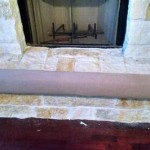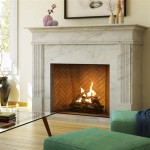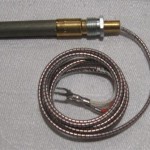Direct Vent Gas Fireplace Inserts: A Comprehensive Review
Direct vent gas fireplace inserts offer a practical and aesthetically pleasing alternative to traditional wood-burning fireplaces. These inserts utilize a sealed combustion system, drawing air from outside the home and venting exhaust gases directly outdoors through a dedicated vent pipe. This closed system enhances safety, improves energy efficiency, and reduces the risk of indoor air pollution, making them a popular choice for homeowners seeking a convenient and environmentally conscious heating solution.
The market for direct vent gas fireplace inserts is diverse, with various models catering to different needs and preferences. Factors such as heating capacity (measured in BTU), aesthetic design, fuel type (natural gas or propane), ignition system, and included features significantly influence the selection process. Understanding these aspects is crucial for making an informed decision that aligns with individual requirements and budget.
Heating Efficiency and Operational Cost
One of the primary advantages of direct vent gas fireplace inserts is their superior heating efficiency compared to traditional fireplaces. The sealed combustion system minimizes heat loss, directing a greater percentage of the generated heat into the room. This results in more effective heating and lower energy bills. The efficiency rating, typically expressed as a percentage, indicates the proportion of fuel energy converted into usable heat. Higher efficiency ratings translate to lower operational costs.
The BTU (British Thermal Unit) rating of a fireplace insert denotes its heating capacity. Choosing an insert with an appropriate BTU rating for the room size is essential for optimal performance. An undersized insert may struggle to adequately heat the space, while an oversized insert may lead to overheating and inefficient fuel consumption. Consulting with a qualified HVAC professional or fireplace retailer can help determine the ideal BTU rating for a specific application.
Beyond the initial cost of the insert, operational expenses encompass the price of fuel (natural gas or propane) and any maintenance required. Natural gas is often more economical than propane, depending on local fuel prices. Regular maintenance, such as cleaning the burner and inspecting the venting system, is necessary to ensure safe and efficient operation. Neglecting maintenance can lead to decreased performance, increased fuel consumption, and potential safety hazards.
Safety Features and Installation Requirements
Safety is a paramount consideration when choosing a gas fireplace insert. Direct vent systems mitigate the risk of carbon monoxide poisoning by completely isolating the combustion process from the indoor environment. The sealed combustion chamber prevents the backdrafting of harmful gases into the living space. Many models incorporate safety features such as oxygen depletion sensors (ODS) and automatic shut-off valves, which further enhance safety by detecting low oxygen levels or gas leaks.
Proper installation is crucial for ensuring the safe and efficient operation of a direct vent gas fireplace insert. Installation should be performed by a qualified and licensed technician who is familiar with local building codes and manufacturer specifications. The venting system must be correctly installed and sealed to prevent gas leaks and ensure proper exhaust of combustion gases. Improper installation can compromise safety and void the manufacturer's warranty.
The venting requirements for direct vent inserts are more stringent than those for vent-free or B-vent models. Direct vent systems typically require a dedicated vent pipe that runs directly to the outside, either through a wall or the roof. The vent pipe must be approved for use with gas appliances and properly sized to accommodate the exhaust flow. Consult the manufacturer's installation manual for specific venting requirements and guidelines.
Aesthetic Design and Style Options
Direct vent gas fireplace inserts offer a wide range of aesthetic design options to complement various interior styles. From traditional log sets to contemporary glass media, there are numerous choices available to create a customized look. The firebox interior can be configured with realistic-looking logs, decorative stones, or reflective glass panels to enhance the visual appeal of the flames.
The exterior design of the fireplace insert can also be customized to match the surrounding decor. Options include various trim styles, finishes, and colors. Some models feature decorative surrounds or mantels that further enhance the aesthetic integration of the insert into the room. The ability to personalize the appearance of the fireplace insert allows homeowners to create a focal point that reflects their individual taste and style.
Many modern direct vent gas fireplace inserts incorporate advanced features such as remote control operation, adjustable flame height, and programmable thermostats. These features provide added convenience and control over the fireplace's operation. Remote control operation allows users to adjust the flame intensity or turn the fireplace on and off from the comfort of their seating area. Programmable thermostats enable users to set specific heating schedules, further optimizing energy efficiency.

Kingsman Clean View Gas Fireplace Insert Review Fireplaces Direct Learning Center

Majestic 30 Inch Ruby Direct Vent Gas Fireplace Insert With Blower
.aspx?strip=all)
Top 11 Gas Fireplace Insert Trends Of 2024

Majestic Ruby Direct Vent Gas Insert 30 Or 35 Monessen Fireplaces

Rushmore 30 Direct Vent Fireplace Insert Fine S Gas

Timberwolf Natural Gas Fireplace Insert Tdi3n

Majestic 35 Inch Ruby Direct Vent Gas Fireplace Insert

30 Ruby Contemporary Intellifire Touch Direct Vent Fireplace Insert Blower And Remote Electronic Ignition Majestic

Majestic Ruby Gas Direct Vent Fireplace Insert Ruby25 Hvacdirect Com

Superior Drt3500 Series Direct Vent Fireplace 35 40 Or 45 Fireplaces Fmi Gas
Related Posts








